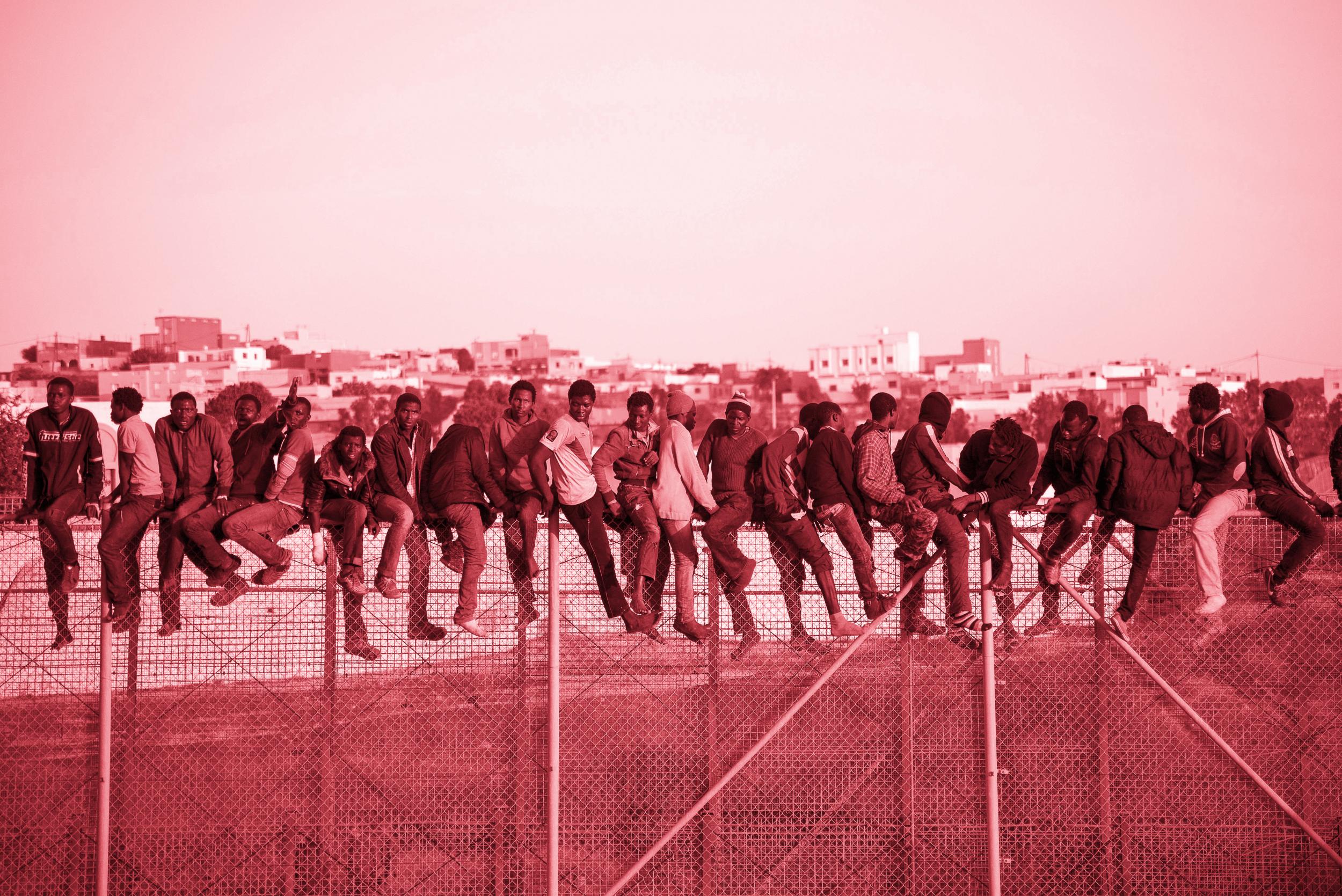Are a million African migrants really on their way to Europe?

Your support helps us to tell the story
From reproductive rights to climate change to Big Tech, The Independent is on the ground when the story is developing. Whether it's investigating the financials of Elon Musk's pro-Trump PAC or producing our latest documentary, 'The A Word', which shines a light on the American women fighting for reproductive rights, we know how important it is to parse out the facts from the messaging.
At such a critical moment in US history, we need reporters on the ground. Your donation allows us to keep sending journalists to speak to both sides of the story.
The Independent is trusted by Americans across the entire political spectrum. And unlike many other quality news outlets, we choose not to lock Americans out of our reporting and analysis with paywalls. We believe quality journalism should be available to everyone, paid for by those who can afford it.
Your support makes all the difference."Already, I’m informed by very well informed guys and girls who are working on the area, and in the area at the moment, that there’s potentially up to a million migrants already, if not more in the pipeline coming up from Central Africa and the Horn of Africa."
Joseph Walker-Cousins, senior fellow at the Institute for Statecraft and former head of the British Embassy Office in Benghazi, speaking to the House of Lords EU External Affairs Sub-Committee on March 30, 2017.
Hard evidence on irregular migration in North Africa is a much sought after commodity; unfortunately, it is also highly unreliable. In its December 2016 assessment of the situation in Libya, the International Organisation for Migration estimated (IOM) that 425,000 internally displaced persons were resident in Libya and that “hundreds of thousands” were displaced into neighbouring countries.
Experienced researchers tend to be sceptical of official statistics on migrants for good reasons. North Africa is both a destination and a transit region for sub-Saharan migrants. It is also extremely difficult to count migrants because migration tends to be clandestine, with people moving through politically unstable regions.
Further problems with official reports and comments such as those by Joseph Walker-Cousins are that they tend to focus on Libya (and fail to look at the wider regional picture). Findings are based on indirect evidence – information from informants, detentions, returns, and arrivals in Europe – not primary research that employs sound methodologies, as fieldwork in Libya is not possible.
Unfortunately, the most likely and most effective barrier to migration – barring an effective policy response from other countries in the region – is death and detention. Thousands of migrants have died transiting the Sahara and tens of thousands are “detained” in North Africa.
While the IOM has been able to access some of the detention facilities in Libya, it has not reported on the number of people detained nor their legal status. While European development agencies are beginning to engage with trans-Saharan migration, very little hard data has emerged from their efforts other than an acknowledgement that conflict and drought in northern Nigeria, Mali, Sudan and the Horn of Africa is pushing people northwards across the Sahara.
Verdict: Are there really a million migrants ready to come?
We simply do not know how many migrants are “in the pipeline”. Nor have regional governments or the European Union agreed a viable strategy for dealing with the underlying processes driving this movement, as opposed to stopping migrants from reaching Europe. We do know two important facts. First, and as noted in the 2016 IOM study, not all sub-Saharan migrants intend to come to Europe. Second, without an accurate assessment of the situation and serious policy dialogue with transit countries, no resolution to this issue is possible.
Review, by Nando Sigona, deputy director of the Institute for Research into Superdiversity, University of Birmingham
I agree with the verdict. The story that a million African migrants are ready or in “the pipeline” to reach Europe from Libya is nothing new and Joseph Walker-Cousins’s claim has previously been aired by other variously informed people. It resurfaces periodically in the media (2015, 2016, 2017), but repetition is no proof of validity; rather it is an example of how charts and figures play a significant role in how we understand and debate the so-called refugee crisis.
On the one hand, it encapsulates the power of numbers in firing up public and political debate and sustaining the “crisis mood” that pervades policy responses to boat migration. On the other, it shows the lack of scientific rigour and yet resilience that often characterises the numbers of the “crisis” that circulate so widely in the global media and among policy makers – impermeable to attempts being made to show how baseless they are.
This article was originally published on The Conversation. Read the original article.
Join our commenting forum
Join thought-provoking conversations, follow other Independent readers and see their replies
Comments